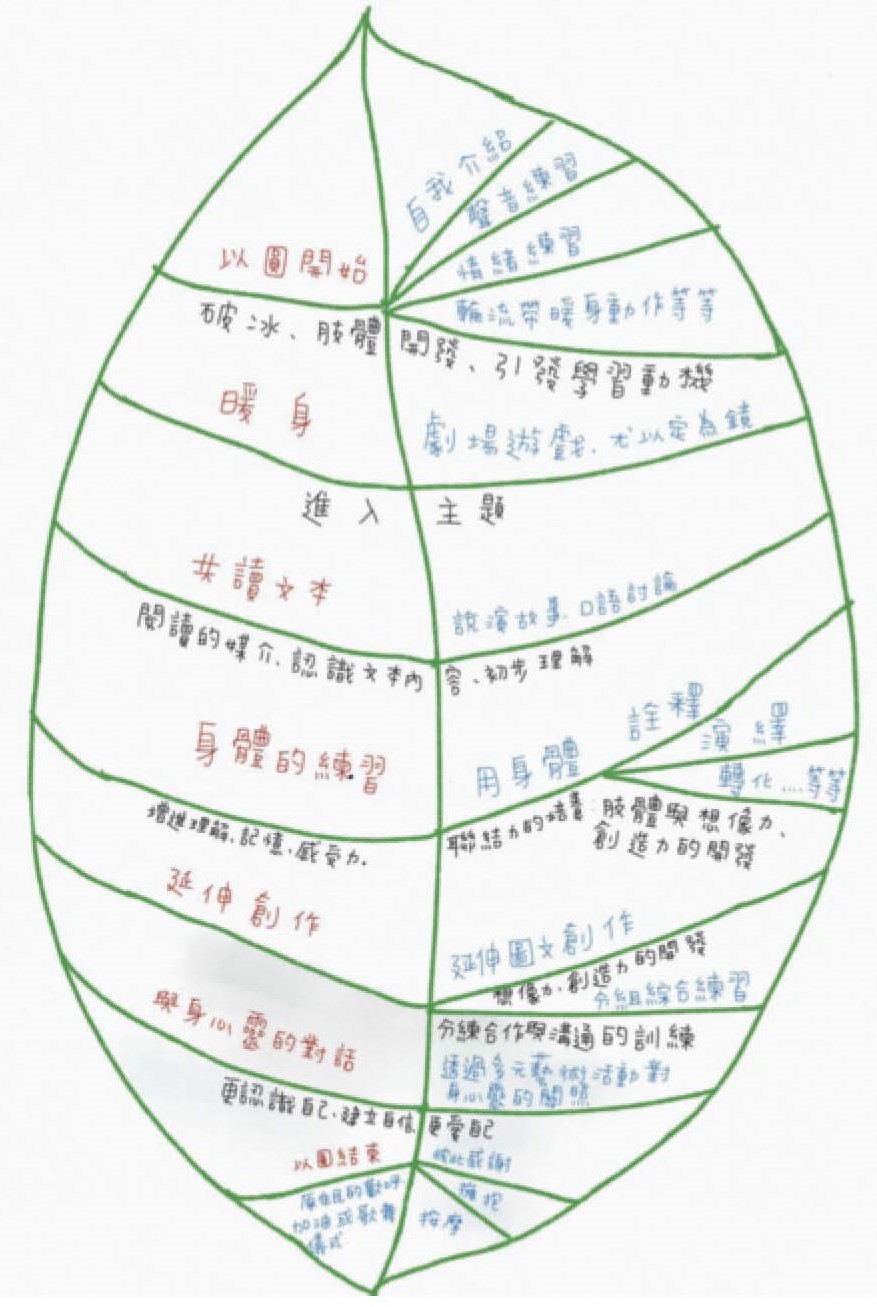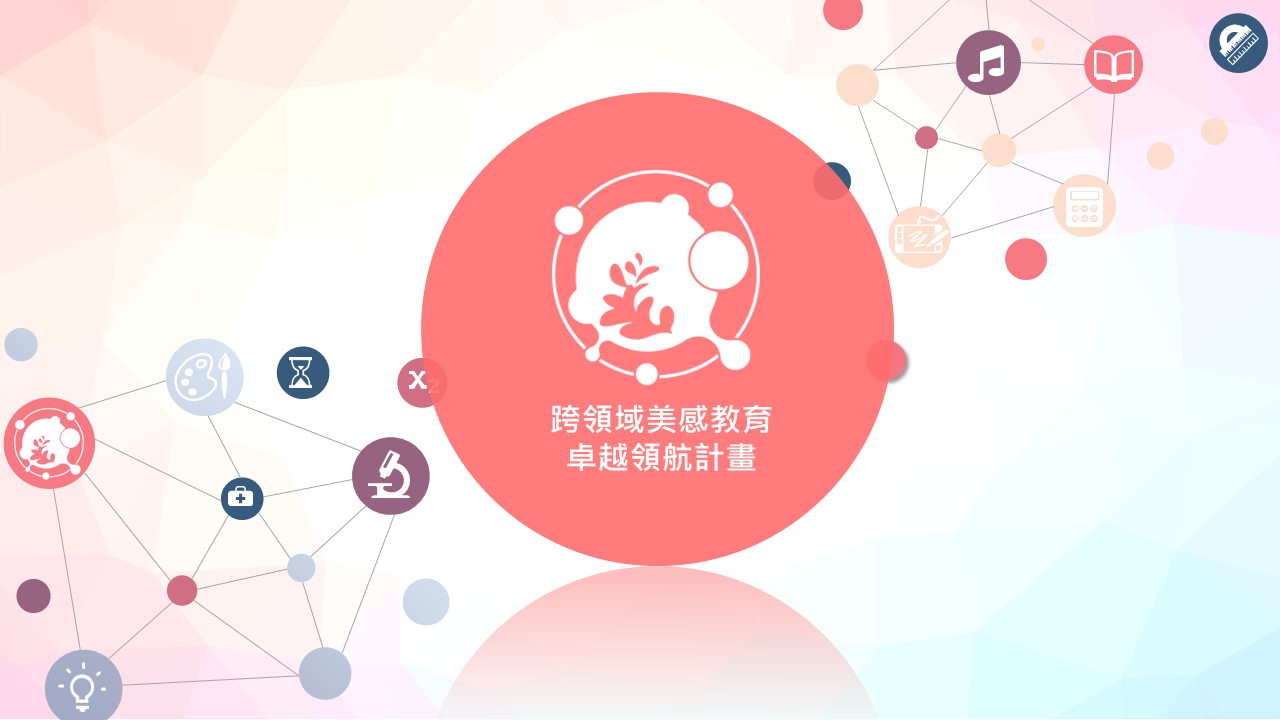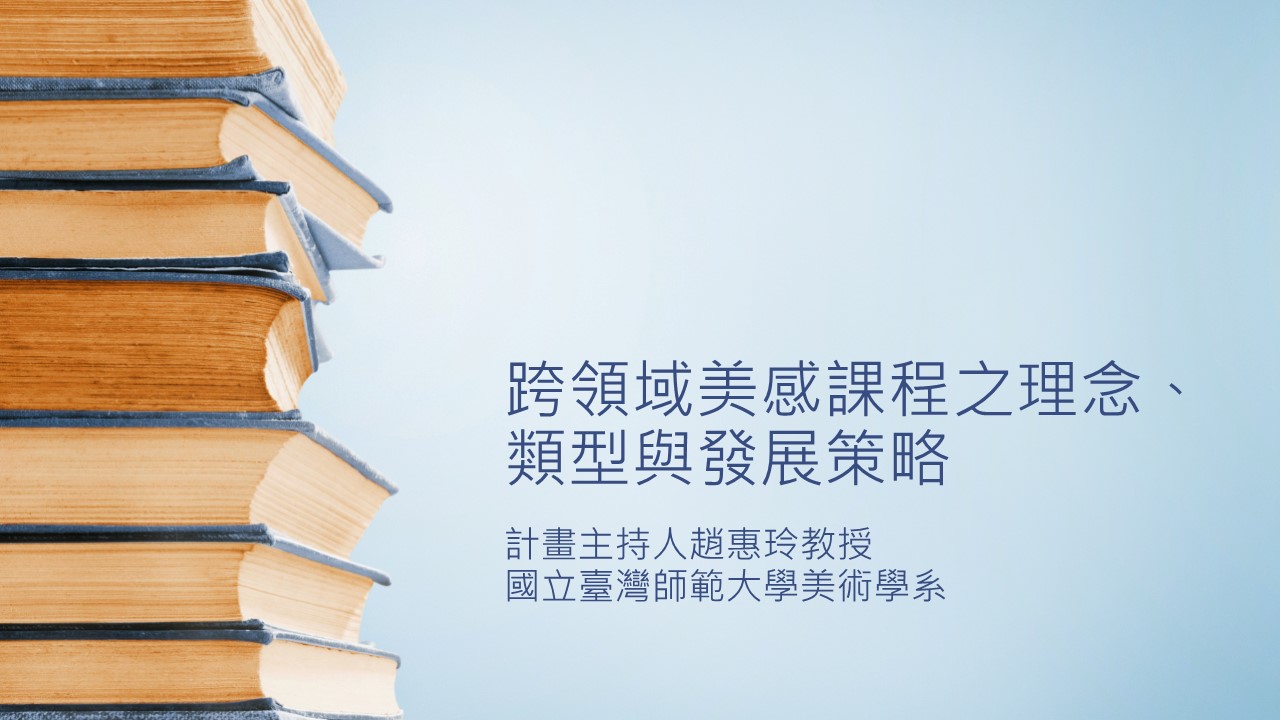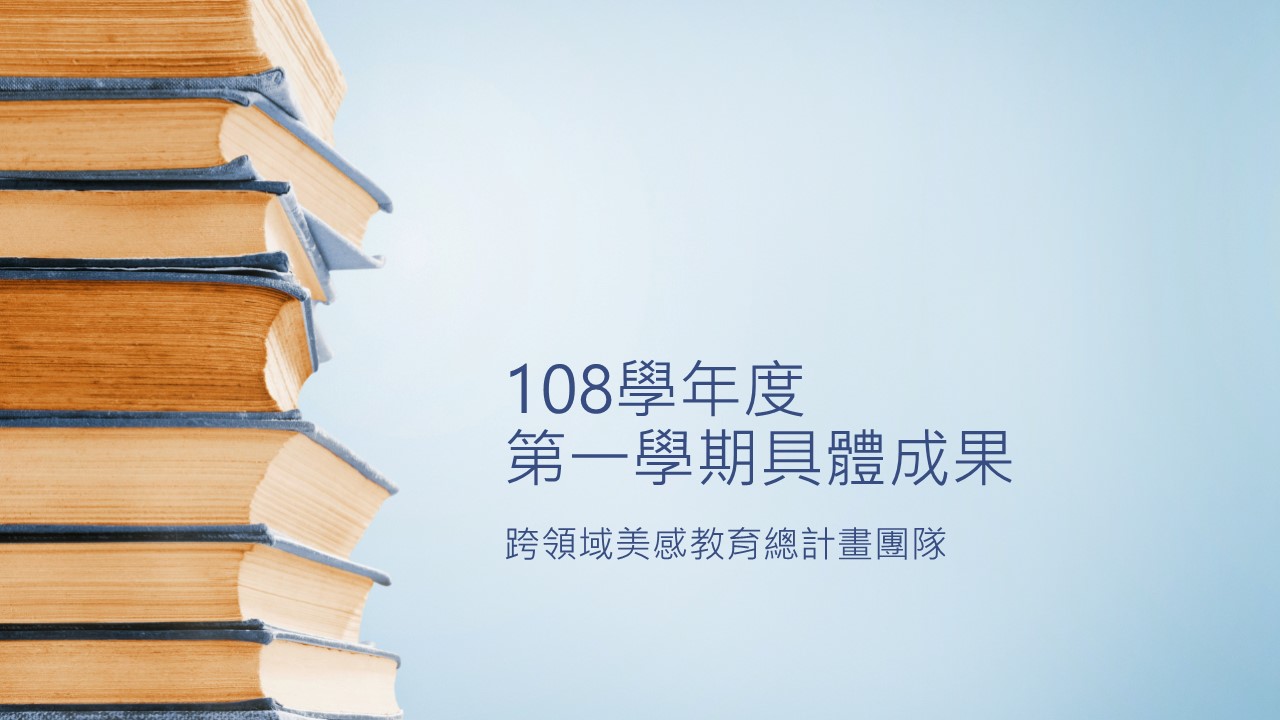Exploration and practice of body reading
Assistant Professor Hong Qiongjun, National Taitung University General Studies Center
What is body reading
I have been teaching for twenty years. In the teaching field, I first combined multi-arts with observation of nature. Later, when I was in graduate school, I began to try to integrate multi-arts into teaching reading. The most commonly used method is to combine picture books with creative writing. The teaching model of sexual drama activities has gradually developed to the point where the reading of text-based texts (such as essays and novels) can be combined with drama activities, and the use of educational theater techniques to deconstruct image texts is equivalent to using the body as a reading tool. After the physical activities are over, the creative course of writing, painting, drama, and natural observation can be extended. Until ten years ago, I began to use the body as a reading tool, using the body to interpret words, to deepen students' understanding and memory of the meaning of the text, as well as their sensitivity to the words, their ability to interpret and transform, and their imagination. Finally, return to the inside, read your own body, talk to your body, and observe your own life. This course method is named: "Body Reading".
This entire teaching process is an organic creative process for me and the students, and it is also a creation that combines children's literature and drama education.
"Body reading" is a reading guidance method with creativity, vitality and sensitivity; for me personally, it is the embodiment of twenty years of accumulated experience, knowledge, creativity and enthusiasm. Although I also write books, make documentaries, and write and direct stage plays, the role that gives me the highest sense of accomplishment and the lowest frustration is the role of a teacher. In particular, the teaching of reading and writing, which focuses on creative drama and integrates multiple arts, is the most fulfilling. I maintain a high degree of enthusiasm, because every class is another creation for me, and this creation is something that my brain with insufficient artistic ability can fully control. Teaching not only satisfies my joy of creation, but also receives feedback and love from students. It has created the value of my life. These are the motivations for me to continue playing with high enthusiasm even after twenty years of walking.
Benefits of body reading: motor memory, sensory development, physical development, concentration, cooperation, imagination, creativity, understanding, sensitivity, empathy development, problem-solving skills, self-reflection, and through role-playing , creative drama, and educational theater practices allow participants to deepen their experience, empathy, and develop the ability to think and solve problems.
Body reading is especially used in reading and creation: using the body to understand, using the body to interpret, using the body to transform, using the body to perform, and using the body to write poetry.
Body reading can be a universal reading method: body reading for primary school students, body reading for college students, body reading for parents and children/shared reading (massage of body, mind and soul, healing to promote self-expression, parent-child intimacy time), body reading for story volunteers, Elderly body reading.
Body reading teaching module
I have compiled the two most commonly used body reading methods as follows:
Module 1: Talk and do at the same time
Start from the shared reading text→interrupt shared reading to carry out activities→return to the text→interrupt shared reading to carry out activities, and follow this pattern.
Teaching objectives and difficulty levels of activity content, practice and presentation from small to large, individual to group. It is also carried out in the order of improving understanding, memory, and sensitivity → cultivating connection ability, developing body and imagination, creativity, cooperation and communication exercises → contemplating mind, body and soul. The warm-up part is mostly carried out through theater games, fixed shots in drama rituals, limb development, children's yoga, breathing, meditation, guided visualization and other activities; the main axis of entering body reading is creative drama and creative dance. , the integration of multiple arts, etc.; the final stage ends with the presentation of comprehensive group exercises or graphic and text creation, dialogue with the body, spiritual movies and other activities that connect the body, mind and soul.
Module 2: Leaf Shape Development
(1) Red: sequence of activities.
(2) Blue: content.
(3) Black: Teaching objectives
(4) Time allocation: Ceremony starting with the circle 5% → Warming up 10% → Reading the text together 15% → Physical exercises 30% → Extended creation 20% → Dialogue between body, mind and soul 15% → Ending with the ritual of the circle 5%
(5) The most important spirit of leaf-shaped development is the triggering in the process. The triggering of this point and another point may extend in all directions like the veins of a leaf, whether it is the development of activities, the imagination of the curriculum, or the teaching and learning. The interactive influence and excitement between them.
Key points and suggestions for body reading teaching:
(1) Operation mode: basically follow the online learning of selecting theme-related warm-ups and activities from breaking ice, establishing theme awareness, entering the theme, extending thinking, imagination, and creation, and finally returning to the axis of connection between body, mind, and soul and self-care. conduct.
(2) Activity principles: from individual to group cooperation and then back to individual or finally ending with group comprehensive exercises. The order of exercises is from easy to difficult, from small to large, from simple to complex.
(3) Course duration: At least two classes are eighty minutes long, allowing for complete operational exercises. If additional text or image creation is required, the ideal time is three hours, which allows for complete teaching of a theme.
(4) Activity space: It is best to have a classroom with soft cushions or wooden floors. You can wear slippers during class. If you are in a classroom with desks and chairs that usually have gravel washing, move the desks and chairs against the wall or move them outside the classroom to make the classroom free. Complete the space and clean it so that students can wear slippers during class to facilitate physical activities.
(5) Flexibly adjust the curriculum: Because the body reading teaching process is an organic creation, in addition to the suggestions of the teachers, the most important thing to control the time of each activity is to rely on the experience, intuition and sensitivity of the teacher, and be keenly aware Flexible adjustments are made based on the attributes of the students and the current situation at the teaching site. If some activities become stagnant during progress, the teacher may have to step in to provide ideas, stimulate discussion, or end the activity early and replace it with another activity; Sometimes, because students are not yet ready to enter the situation, are too impetuous, or are too unfamiliar, those who are unfamiliar may need to spend more time or activities to warm up and become more familiar with each other; those who are too impetuous may switch to calming activities, including breathing. , sit still, meditate, yoga, etc., to allow students to calm down, so that the next course can proceed more smoothly.
(6) Order management: Because body reading involves a lot of physical activities, students (especially male students) can easily take advantage of the chaos to bump into other people's bodies, causing chaos in the order. Please remind the rules of the activity again and again before starting the activity to avoid bumping into other people's bodies. Causing injuries is one method; taking away or handing over the student who caused the chaos to the co-teacher, terminating the activity, etc. are all possible methods.
(7) Conflict coordination and resolution: Physical reading also requires a lot of group cooperation. Therefore, conflicts in group cooperation of primary school students who have not yet been fully socialized are relatively common. The (drama) is presented three-dimensionally, and through the other (audience) ) vision and stimulation (other groups), seeing others successfully cooperate and receive applause for completing performances, enhances the sense of honor of the group (performers), stimulates each other to be more united, and stimulates more ideas - this is what I The most successful way to resolve cooperation conflicts in recent years. Of course, it is also important and helpful to do more theater activities to cultivate the ability and tacit understanding of group cooperation and establish an atmosphere of mutual trust and mutual respect, including appropriate and sincere encouragement, accepting and responding to children's emotions and ideas, expressing teachers' own feelings, Accept creative limitations and imitative behavior, accept your own mistakes, etc.
(8) Waiting: Teaching is a career that takes a hundred years to cultivate people, and the results cannot be seen immediately. A special book has been published on theory: the exploration and practice of body reading, not to mention body reading, which requires the interaction of the body as the learning medium. For children from the upper grades of elementary school to college, it takes more time to get used to each other, let go of defensiveness and get familiar with people and the environment, and gradually cultivate a tacit understanding and establish a culture of physical reading classes. I often remind myself that there is no need to rush through the body reading class. There is no homework that must be completed in this class. The teacher can wait, waiting for people and the environment to move from the "external relationship" to a deeper level. The inner interactive "situation" is mature, and if you observe more and feel more, you can wait for the transformation of students.
Ever-changing teaching experiments
For me, teaching is the greatest creation, and it is also a deep play that allows me to reach the highest level of creativity in a sacred and joyful way. In the teaching experiment of body reading, every text becomes a game, every poem becomes a dance ritual of words, and every body reading becomes a profound spiritual meeting.
Teaching is the art form that I can best use to create freely. I use text as the subject matter and the classroom as the drawing board. Every body that dances, plays, plays, and reads becomes my colorful communication that adds color to the world. Thoughts, emotions, praise, singing, an art and a ritual of finding order in the chaos of this world.
In order to find order in chaos and watch how inspiration flashes and gathers to create shapes, I took the body reading activity inspired by the essay "Planting Trees on the Mountain" as an example (see the appendix), because this article is included in the primary school textbook The grade-level text comes from my 1999 work "Nature Travels". Sometimes it is used as a teaching material for body reading classes with different targets, and sometimes it is used for teaching and research of primary school teachers, so this article is used as a The text development courses can range from one hour to three hours. The subjects currently tested include primary school students, junior high school students, college students, storytelling volunteers, parents and teachers, and the age range ranges from six to 75 years old. "Planting Trees on the Mountain" describes the process of me taking students to Banping Mountain to plant trees. Before planting trees, I shared with the students the story of the "tree-planting man" who has been planting trees in the Alps for 35 years. The article will return to Banping Mountain. In the scene, the students and their parents planted the saplings that I prepared in advance and hung signs on the saplings. The signs wrote what the students wanted to say to the saplings. After that, the students’ parents often took their students up the mountain to help the saplings. Watering - The first stage of the teaching module is to warm up, the second stage is to read the article together, the third stage is to discuss the text, and supplement my experience of natural observation in Banping Mountain and the story of fieldwork, and the fourth stage During the stage of body reading, the activities performed are listed below:
1. Pull out two story scenes from the text and divide everyone into two groups, one is the Banping Mountain group and the other is the Alps group. I use questions to outline the three scenes and discuss the content and imagery. atmosphere, and the final grouping is presented in dramatic form.
2. Use a large poster to think of any words, sensory images or things related to trees (for example: growth, strength, strength, fruit, shade, furniture...), and then use these words as creative text or pictures. Material for drama. Use a large poster to imagine what kind of obstacles a tree will encounter in its growth, including man-made and natural disasters... Then use these ideas as material to create a three-act play.
3. Please share your memories related to a tree, and then present the memory through text, pictures and drama. Draw a "Tree of Life", analyze the tree of life and compare it to the current physical and mental state of the person who drew the tree.
4. Use your body to simulate the growth of a seed and grow into a tree. To imagine what kind of tree you want to be, you can draw materials from reality, or you can transcend reality and imagine a tree that does not exist. Made with the body, supplemented by the creation of images and words.
5. The above-mentioned physical reading activities usually involve multiple operations, which are adjusted according to the object, time, venue and interactive situation of the teaching site, and are still developing. From the above examples, we can see that my body reading class not only has a wide range of teaching objects, but also a large age range. The activity time is also very flexible and can be extended infinitely. It can be concentrated, stir-fried, slow-cooked, long or short, and more importantly, , every time the inspiration for teaching is an idea suddenly pops up, emerges suddenly, shines out, like coming from a dream, it hits me immediately... What these sentences describe is the following common experience: certain concepts emerge from the level of perception. The cocoon breaks out deeper below. The inspiration for my teaching is the existence and ecstasy of the subconscious breaking through the consciousness, and this ecstasy creates order out of chaos, "from the meaning of the kind of emotion that comes with a highly concentrated consciousness, or because of "Experience the special state of mind when you realize your potential." This is also the state of mind that I put my inspiration into practice. This wonderful joy comes from the emergence of order out of chaos, the emergence of form out of chaos, the joy that comes from being able to participate in being itself, however small this participation may be.
The school of psychoanalysis emphasizes the releasing effects of the preconscious and subconscious mind. They believe that humans all have innate instinctive desires. Instinct needs must be satisfied before the drive will disappear. Otherwise, there may be three situations. The first is that it is suppressed and enters the subconscious state. Once there is a chance to be released, it may appear in a state different from the prototype, such as being transformed into literature or literature. The creation of art. The second is that it cannot be completely suppressed and conflicts with the ego and superego. In this case, if it is released, there will be a phenomenon of creation. The third is directly sublimated into the driving force of creation. This explains my drive to continually create in teaching. Mihaly Csikszentmihalyi proposes two main reasons why creativity is the main source of meaning in our lives and is fascinating: 1. Most interesting, important, and human things are The product of creativity. 2 When we are there, we feel more fulfilled than at other times in our lives.
In the constantly changing teaching experiments, I feel a more fulfilling life moment and a more fascinating game time in the high degree of creativity. I can always find rules, focus, ecstasy, and even the desire to create is limited in such creation. The tension, the frustration of failed practice, the rhythm of the ceremony and the shocking enthusiasm in my heart...all these are my will to continue to float and sink in this rolling river that is constantly changing its course.
The body reading class not only has great possibilities for teaching objects of different ages, ethnic groups, genders, and classes (the youngest I have taught is 3 years old and the longest is 97 years old), the activity time is also very flexible and can be extended infinitely or condensed according to the situation. The text is not limited to be read in one course. It can be divided into several times, or only a fragment of it can be read. The difficulty of the activity can also be adjusted according to the situation. However, the number of people and the space of the class are limited. It is best to have a fully padded or wooden floor space, where you can take off your shoes for class, and do floor exercises without injury. If everyone is to participate, consider that the space can accommodate the participants so that they have enough space to stretch. , the number of people also needs to be limited, and at the same time, physical activities also need to interact with each other. The number of people is too small, less than seven, and it is not easy to create an atmosphere and interaction. Seven or eight years ago, I was invited to an elementary school in Taipei to conduct body reading for the "Appointment with Writers" event. There were 200 people in the audience. For the dynamic part, I could only move my upper body in place, or invite a few students to come on stage to do body reading, and at the same time lengthen the static activities. time, there are more than ten volunteers in the audience to assist, so that it can be completed smoothly. Now that I am getting more and more experienced, I have done several body readings that are also "writers' appointments" activities. It can be carried out smoothly without the assistance of volunteers. However, only a few people can come on stage to experience body reading, and not everyone can participate. The number of people and space are very important restrictions when body reading classes are to be vigorously promoted in teaching sites. In addition, managing time is always the biggest challenge and restriction. Even with 20 years of experience, I still often feel that there is not enough time. . However, among all these limitations, the biggest limitation is still on the teacher and the pressure to meet the schedule. For teachers who are used to using their mouths but not their bodies, teachers of "body reading" must make the learning atmosphere relaxed and lively. To make students willing to open up their bodies that have been tamed by desks and chairs and show them freely, teachers need to put down their bodies, let go of their limbs, open their minds, and allow their bodies to demonstrate. They also need to wait for students to enter the situation and become familiar with this kind of situation, which is different from ordinary listening. However, under the pressure of rushing to schedule and teachers who are not accustomed to the mode of physical display, body reading needs to be vigorously promoted in the teaching field, and more teachers are required to be willing to break through the original teaching framework.
Huang Wuxiong said: "If there is a third thing that should be done in school education, then the third thing is to leave blank space; leave more time and space for students to create, interact, meditate, imagine, To try and make mistakes, to express themselves, to do various creations... let them use time and space freely. This is also the practical concept of body reading. Education should allow the mind to have blank space to play and create.
And Rollo May said: Exercise is not to build muscles, but to cultivate keen sensibility. What we need to develop is the ability to listen with the body. This passage revealed to me the essence and core value of body reading. The reading that the body needs to practice is what Nietzsche calls "learning to think with the body." This can enhance the value of the body and make the body a medium of empathy and concern for others; make the body a way to express the beautiful connotation of the self; make the body a A receptor for all kinds of pleasure; making the body a rich source of creation.
"Body reading" is a non-mainstream reading guidance method that is creative and vital. For me personally, it is the practice of twenty years of accumulated experience, knowledge, creativity and enthusiasm. Through the exploration of this paper, we have seen the possibilities and limitations of body reading, but we also understand that through the practice of body perception, we can expand the private feelings of lonely reading, or even force modern teenagers who are often in a state of insensible to read in the body. Movement stimulation activates synesthesia, constructs cognition, develops imagination, and not only uses the body to read words, but also uses the body and mind to read the first mother tongue of life - nature. I hope that I will practice "body reading" for 20 years. It can provide reading promoters with an interesting and
Creative approaches to reading.
This article is included in "What Class Is This - Imagination and Practice of Cross-Field Aesthetics Courses", Taipei: National Taiwan Normal University, 2018




